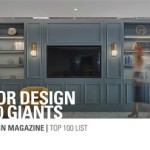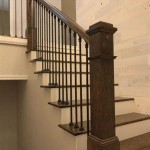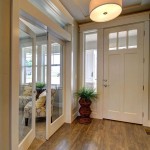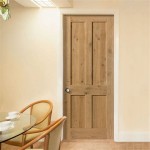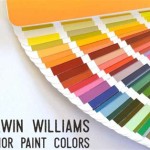What is Mid-Century Modern Interior Design?
Mid-Century Modern (MCM) interior design is a distinctive aesthetic movement that emerged in the mid-20th century, specifically from the 1930s to the 1960s. It represents a significant departure from the ornate and heavily decorated styles that preceded it. MCM emphasizes functionality, clean lines, and a connection to nature, resulting in spaces that are both aesthetically pleasing and highly practical. While its peak popularity was decades ago, its influence continues to be felt in contemporary design, making it a timeless and enduring style.
The term "Mid-Century Modern" itself wasn’t widely used until the mid-1980s, coined by Cara Greenberg, who used the term in the title of her 1984 book, "Mid-Century Modern: Furniture of the 1950s." However, the design principles and characteristics associated with the style were already well-established and celebrated by architects, designers, and homeowners alike. This period followed the aftermath of World War II, a time of significant social and technological change, which heavily influenced the style’s development. The availability of new materials, a focus on mass production, and a renewed optimism about the future all contributed to shaping the MCM aesthetic.
Understanding the core elements of Mid-Century Modern design is vital to appreciating its unique character and its enduring appeal. It's not just about furniture; it's a holistic approach to interior spaces that encompasses architecture, materials, color palettes, and the overall feeling of openness and light.
Key Point 1: Emphasis on Functionality and Simplicity
One of the defining characteristics of Mid-Century Modern design is its emphasis on functionality. Every element within a space, from the furniture to the accessories, is chosen with purpose in mind. Unnecessary embellishments are stripped away, leaving behind clean lines and simple forms. This focus on practicality doesn't mean sacrificing style; instead, it promotes a sense of order and elegance that is both visually appealing and conducive to comfortable living. Furniture pieces are designed to be comfortable and usable, rather than merely decorative. Multi-functional furniture, such as convertible sofas or storage coffee tables, are common features of MCM interiors.
The ‘form follows function’ principle, often associated with the Bauhaus movement, heavily influenced MCM design. This principle dictates that the design of an object should be primarily based upon its intended function or purpose. The result is furniture and architectural features that are often characterized by their geometric shapes and their ability to serve their purpose efficiently. For example, a classic Eames Lounge Chair is not just aesthetically pleasing but is also designed for utmost comfort and relaxation. The angle of the backrest, the curvature of the seat, and the choice of materials all contribute to its ergonomic design.
This focus on functionality extends to the overall layout of the space. Open floor plans are a hallmark of MCM architecture, promoting a sense of flow and connectivity between different living areas. Furniture is often arranged to facilitate conversation and interaction, creating a welcoming and social atmosphere.
Key Point 2: Organic Influences and Natural Materials
Mid-Century Modern design celebrates the beauty of the natural world. This is evident in the use of organic shapes, the incorporation of natural materials, and the overall connection between the interior and exterior spaces. Designers sought to bring the outdoors in, creating homes that felt harmonious with their surroundings. The use of large windows and sliding glass doors was common, allowing natural light to flood the interiors and providing unobstructed views of the landscape.
Wood is a defining material in MCM design, often used for furniture, flooring, and wall paneling. Teak, walnut, and oak are particularly popular choices, prized for their rich tones and durability. These materials are often left in their natural state, showcasing the grain and texture of the wood. Other natural materials frequently incorporated into MCM interiors include stone, leather, and wool. These materials add warmth and texture to the space, creating a sense of comfort and authenticity.
The influence of organic shapes can be seen in furniture designs, such as the kidney-shaped coffee tables or the curved lines of molded plastic chairs. These shapes soften the angularity of the architecture and add a touch of playfulness to the space. Plants are also an essential element of MCM interiors, bringing a sense of life and vibrancy to the space. Common choices include succulents, ferns, and fiddle-leaf fig trees, which complement the clean lines and natural materials of the design.
Key Point 3: Bold Colors and Geometric Patterns
While natural tones and materials play a significant role in MCM design, the style also embraces the use of bold colors and geometric patterns. These elements add visual interest and personality to the space. The color palettes often feature a mix of earthy tones, such as olive green, mustard yellow, and burnt orange, combined with pops of brighter hues like turquoise, red, and blue. These colors are often used in upholstery, accessories, and artwork, adding a playful and energetic touch to the space.
Geometric patterns are another defining characteristic of MCM design. These patterns can be found in textiles, wallpaper, and even architectural details. Common geometric motifs include simple shapes like squares, circles, and triangles, as well as more complex patterns like diamonds and chevrons. These patterns add visual interest and a sense of dynamism to the space.
The use of color and pattern in MCM design is not arbitrary; it is carefully considered to create a harmonious and balanced aesthetic. For example, a neutral color palette might be punctuated with a few strategically placed pops of color, or a geometric rug might be paired with solid-colored furniture to create a focal point. The goal is to create a space that is both visually stimulating and comfortable to live in.
In addition to larger patterns, smaller details like starburst clocks and atomic-inspired motifs are also frequently incorporated. These elements add a touch of retro charm and further enhance the MCM aesthetic.
The synthesis of these key points – functionality and simplicity, organic influences and natural materials, and bold colors and geometric patterns – defines the Mid-Century Modern interior design style. While there were regional variations and individual interpretations, these principles remained consistent across the movement.
Beyond the core elements, several additional aspects contribute to the overall aesthetic of MCM interiors. Lighting plays a crucial role, with iconic designs like the Arco lamp and the Nelson Bubble lamps adding both illumination and visual interest. The style also often incorporates elements of other design movements, such as Scandinavian design, which emphasizes simplicity and functionality, and Bauhaus design, which focuses on the relationship between form and function.
Art is also an integral part of MCM interiors. Abstract paintings, geometric prints, and sculptural pieces are often used to add personality and visual interest to the space. The artwork should complement the overall aesthetic, enhancing the clean lines and organic forms of the design. Photography was a favoured medium, often depicting nature or abstract concepts.
Another important consideration is the use of space. MCM interiors are typically characterized by their open floor plans and uncluttered surfaces. This creates a sense of airiness and spaciousness, making the space feel more inviting and comfortable. Furniture is often arranged to maximize the flow of traffic and to create distinct zones for different activities. Emphasis is placed on highlighting architectural features, with minimal ornamentation distracting from the clean lines and structure of the building itself.
The enduring popularity of Mid-Century Modern interior design can be attributed to its timeless appeal and its ability to adapt to contemporary lifestyles. Its focus on functionality, simplicity, and a connection to nature makes it a relevant and appealing style for modern homes. The style's versatility also allows for personalization and customization, making it possible to create unique and individual spaces that reflect the tastes and preferences of the homeowner.
Achieving the Mid-Century Modern look in a contemporary home is achievable with careful planning and attention to detail. Start by considering the existing architecture of the space and identifying any elements that can be incorporated into the design. This might include exposed brick walls, hardwood floors, or large windows. Then, choose furniture that reflects the clean lines and organic forms of the MCM style. Look for pieces made from natural materials like wood, leather, and wool. Finally, add pops of color and geometric patterns through accessories, artwork, and textiles. Less is more; avoid clutter and maintain clean lines.
Ultimately, Mid-Century Modern interior design is more than just a style; it is a philosophy of living. It is about creating spaces that are both beautiful and functional, that connect us to nature, and that promote a sense of well-being. It is a style that continues to inspire and influence designers and homeowners alike, ensuring its place as a timeless and enduring aesthetic.

Mid Century Modern Interior Design What Is It And Stunning Examples

What Is Mid Century Style In Interior Design Inspiration Books Blog

Midcentury Modern Style 101

Mid Century Interior Design 7 Tips For Creating A Timeless Modern Home Decorilla

Mid Century Interior Design 7 Tips For Creating A Timeless Modern Home Decorilla

History Of Interior Design Mid Century Modern

Forever A Classic How To Decorate Mid Century Modern Woodgrain

Mid Century Modern Interior Style Urvission Interiors

Mid Century Interior Design 7 Tips For Creating A Timeless Modern Home Decorilla

Mid Century Modern Design Defined How To Master It Décor Aid
Related Posts



